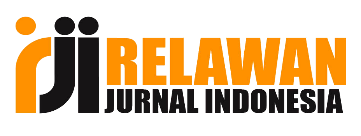Meningkatkan Hasil Belajar Siswa Pada Mata Pelajaran Pendidikan Jasmani Dan Kesehatan Tentang Servis Atas Permainan Bola Volley Dengan Menggunakan Pendekatan Pembelajaran Driil Dan Bermain Di Kelas V SD Negeri 2 Ulim
Abstract
Improving Student Learning Outcomes in Physical and Health Education
Subjects About Service for Volleyball Games Using a Drill and Play
Learning Approach in Class V SD Negeri 2 Ulim. Based on the
description of the background and scope above, the problems analyzed in
this study are formulated as follows, Can the use of the drill and play
learning approach improve student learning outcomes about the concept
of serve for volleyball in class V SD Negeri 2 Ulim? drill and play can
increase student learning activities about the concept of service for
volleyball games in class V SD Negeri 2 Ulim Want to improve student
learning outcomes by using a drill and play learning approach about the
concept of service for volleyball games in class V SD Negeri 2 Ulim.
Want to increase student learning activities about the concept of serving
for volleyball in class V SD Negeri 2 Ulim, several conclusions can be
drawn, namely that students' attention will be emphasized on lessons if
the teacher presents them using an appropriate approach can improve
learning outcomes and student learning activities, this is evidenced from
the average value of the formative test, for Physical Education subjects
in class V, the pre-cycle score was 5.29, cycle 1 was 6.20 and cycle II
was 8.1, it was seen that there was a significant increase from each
cycle.
Downloads
Published
How to Cite
Issue
Section
License

This work is licensed under a Creative Commons Attribution 4.0 International License.
Copyright and License Agreement
- The author(s) owns the copyright and other proprietary rights associated with the article.
- The author(s) has the right and is permitted to use the substance of the article for the author's subsequent works, including for the purposes of lectures and books.
- The author(s) grants the first publication rights to the journal under a Creative Commons License (CC BY 4.0).
Creative Commons CC BY 4.0 License Statement
You are free to:
- Share — copy and redistribute the material in any medium or format;
- Adapt — remix, transform, and build upon the material
for any purpose, even commercially.
The licensor cannot revoke these freedoms as long as you follow the license terms.
- Attribution — You must give appropriate credit, provide a link to the license, and indicate if changes were made. You may do so in any reasonable manner, but not in any way that suggests the licensor endorses you or your use.
- No additional restrictions — You may not apply legal terms or technological measures that legally restrict others from doing anything the license permits.











